
The start of a new year is always an exciting time, a time when the world brims with potential, a time when anything is possible. It’s also a time to reflect on the last year, accomplishments and achievements, what worked and what didn’t.
The year 2016 was a record-breaking one for @CHM, with 41 original blog posts, nearly doubling from the previous two years. Content included everything from live programming recaps and exhibit openings to remembering with fondness and gratitude the computing greats we lost throughout the year, including venture capital legend David Morgenthaler, computer artist Harold Cohen, and distinguished IBMer and CHM Fellow (2004) Erich Bloch. We celebrated the 50th anniversaries of the ECHO IV and the HP 2116, and we wished the public web a happy 25th birthday. We dove fearlessly into the deep trenches of history to reveal the origins of PowerPoint, learned how social media saved the historic Bletchley Park, and took a haunted (virtual) tour of Silicon Valley.
As we prepare and look forward to an even more productive, story-filled 2017, let’s take a look back at @CHM’s 10 most-viewed posts of 2016.
1. The Deep History of Your Apps: Steve Jobs, NeXTSTEP, and Early Object-Oriented Programming
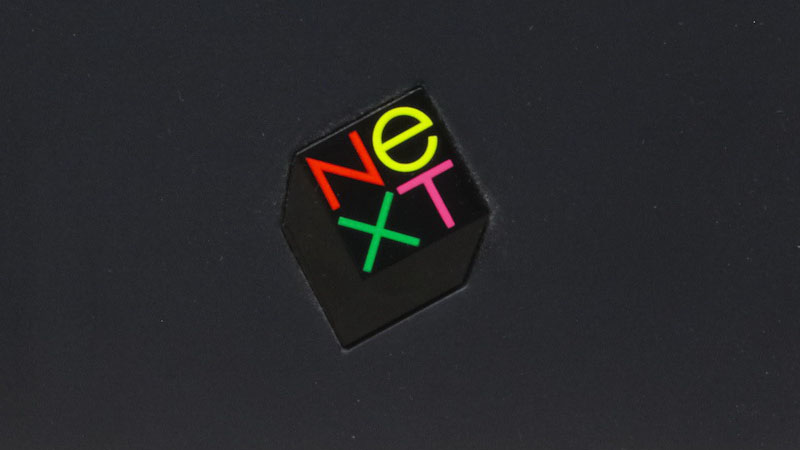
The NeXT logo on a NeXTcube computer.
By Hansen Hsu, Curator, Software History Center | Published March 15, 2016
The history of apps has a little-known, albeit rich 30-year history, one of which connects Steve Jobs’ NeXT in 1985 with the early frontiers of object-oriented programming in the late 1960s. Hsu traces and analyzes the lineage of the now billions of apps downloaded each year on Apple’s App Store through the lens of software.
2. Programming the ENIAC: An Example of Why Computer History Is Hard

Engineers working on ENIAC's function tables.
By Len Shustek, Chairman, Board of Trustees | Published May 18, 2016
“History is our middle name.” It’s an expression we use a lot at CHM. It’s become a badge of honor and it’s something we take seriously. But what many outside the organization and outside the field of computer history may not realize is that computer history is hard! Shustek breaks down the challenges that go into writing—and, often times, rewriting—computer history, citing ENIAC and its relationship to the origins of software as an example of why computer history is hard.
3. The ECHO IV Home Computer: 50 Years Later
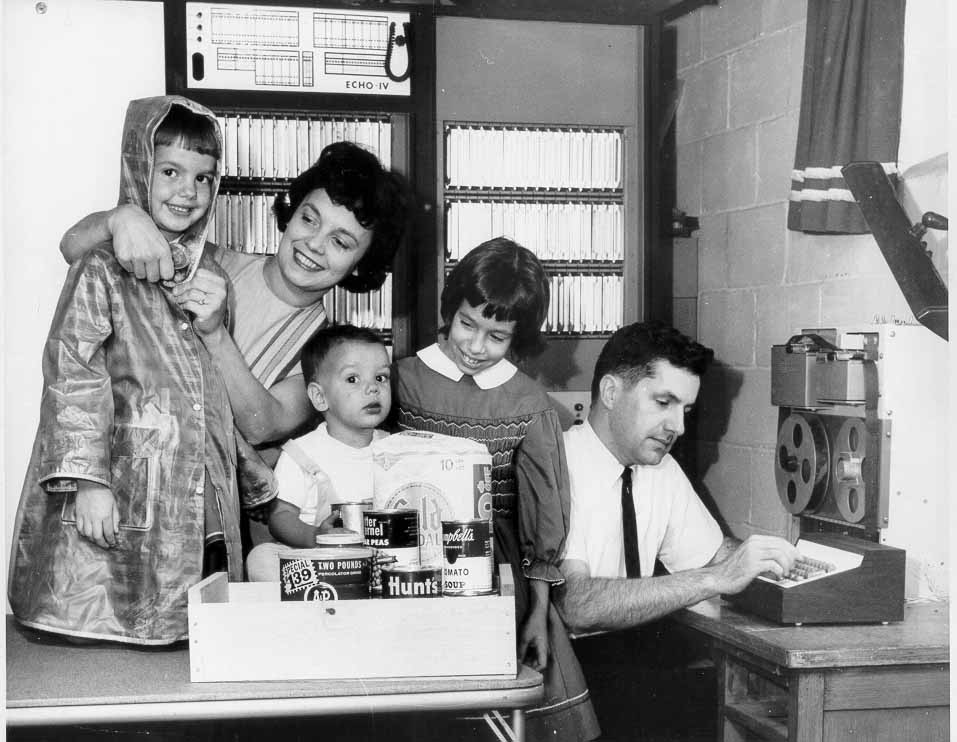
Jim Sutherland sits at the ECHO IV computer. His wife Ruth, puts a raincoat on daughter Sally, while Jay and Ann look on. (Pittsburgh Post-Gazette, 1966)
By Dag Spicer, Senior Curator | Published May 31, 2016
The ECHO IV, a computer “ahead of its time,” celebrated its 50th anniversary in 2016. The ECHO IV was a home computer, built more than a decade before Apple cornered the personal computer market. Weighing it at 800 pounds and built in less than a year by Jim Sutherland between 1965 and 1966, the Echo IV was an instant media darling, a sign of the times, with advertisements that catered to domesticity.
4. In His Own Words: Gary Kildall
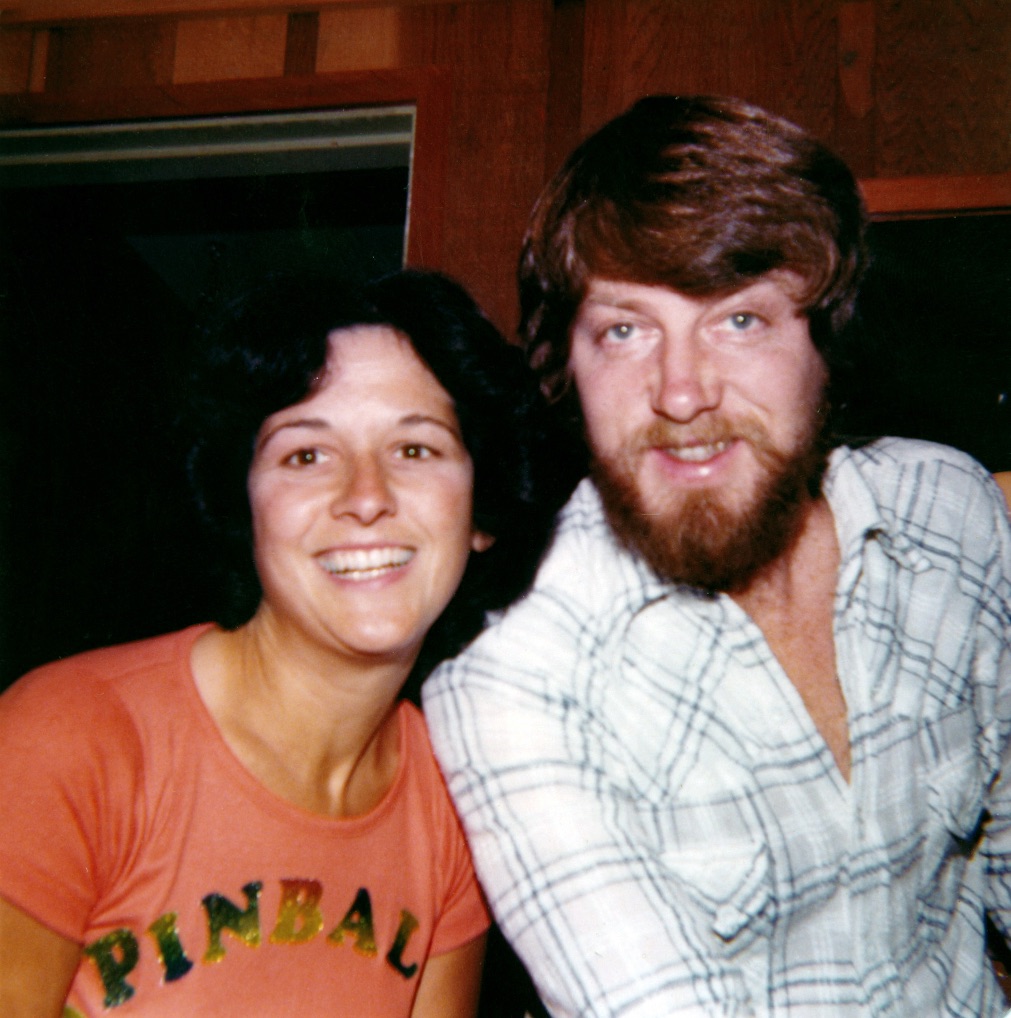
Dorothy and Gary Kildall, ca 1978
By Len Shustek, Chairman, Board of Trustees | Published August 2, 2016
In August 2016, CHM received permission from the Kildall Family to make available selections from software pioneer Gary Kildall’s unpublished memoirs. Written in the months before his death in 1994, Kildall’s memoirs chronicle his childhood in Seattle, his development of the CP/M personal computer operating system, and the founding of Digital Research Inc. In this post, Shustek provides insight into the impact and legacy of Kildall, with never-before-seen family photos and sections of Kildall’s memoirs available for download.
5. 50th Anniversary of the HP 2116 Minicomputer

HP 2116, Computer History Museum
By Chuck House, Trustee | Published November 7, 2016
In 1966, at the Fall Joint Computer Conference, the HP 2116 made its debut. It was Hewlett-Packard’s first computer, meant to supplement the company’s line of programmable test and measurement products. The HP 2116 celebrated its 50th anniversary in 2016, a milestone in many ways for HP, including the company’s first use of integrated circuits. Chuck House, CHM trustee and HP expert, reveals the history of the HP 2116, analyzing its impact on Hewlett-Packard and legacy within the computer industry.
6. The Next Billion: A Conversation with Kiva Executive Chair Julie Hanna
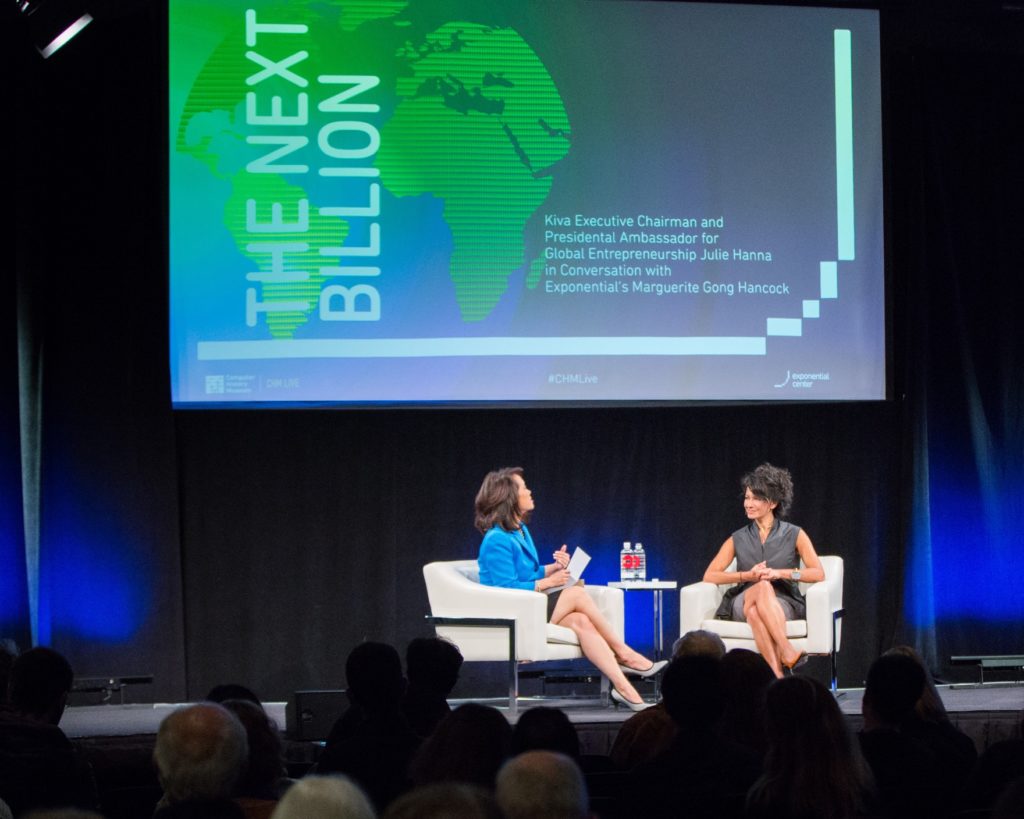
Julia Hanna and Exponential executive director Marguerite Gong Hancock in fireside chat
By Marguerite Gong Hancock, Executive Director, Exponential Center | Published November 8, 2016
Exponential Center’s Marguerite Gong Hancock recaps the November 16 CHM Live show “The Next Billion: A Conversation with Kiva Executive Chair Julie Hanna,” part of Exponential’s speaker series and Global Entrepreneurship Week. Read and see live clips from the show, including Hanna’s insights on the entrepreneurial mindset, finding your purpose, and why scarcity is the mother of innovation.
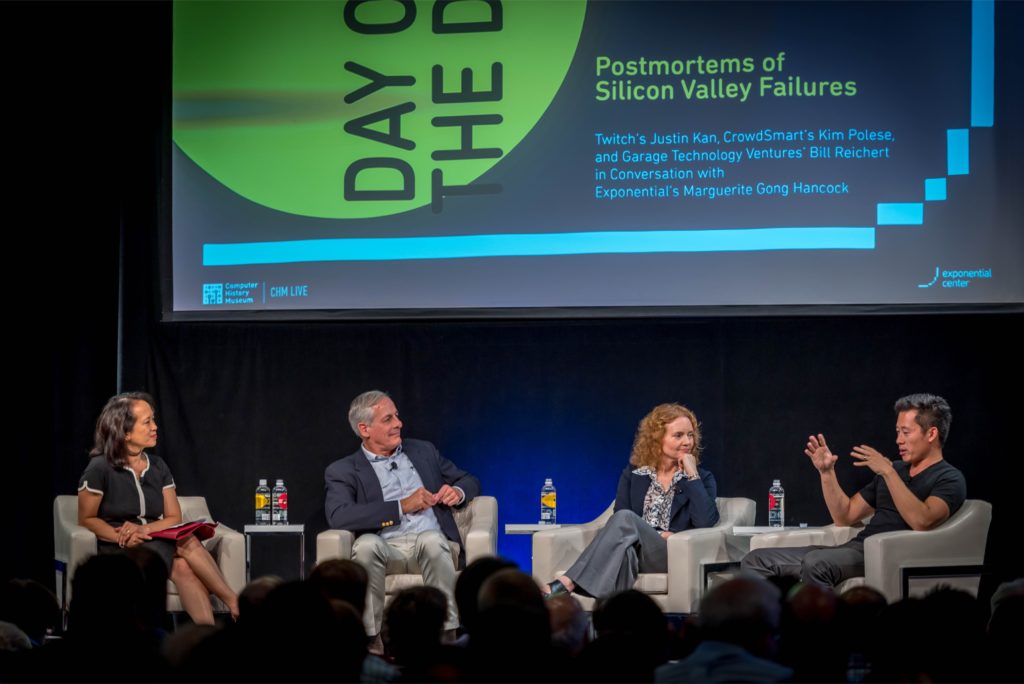
Garage Technology Ventures’ Bill Reichert, Clearstreet’s Kim Polese, and YC’s Justin Kan in conversation Exponential’s Marguerite Gong Hancock (Photo: Terry Chay)
By Marie Williams, NextGen Advisory Board | Published November 15, 2016
NextGen Advisory Board member Marie Williams highlights the best of the October 28 live show with Kim Polese (Clearstreet chairwoman), Bill Reichert (Garage Technology Ventures managing director), and Justin Kan (serial entrepreneur and Y Combinator partner), as they discuss and celebrate the best of their Valley failures—or “industry postmortems,” as the well-themed event touted—with Exponential’s Marguerite Gong Hancock.
8. Blogged by CHM in California: 20 Years of Apple Design
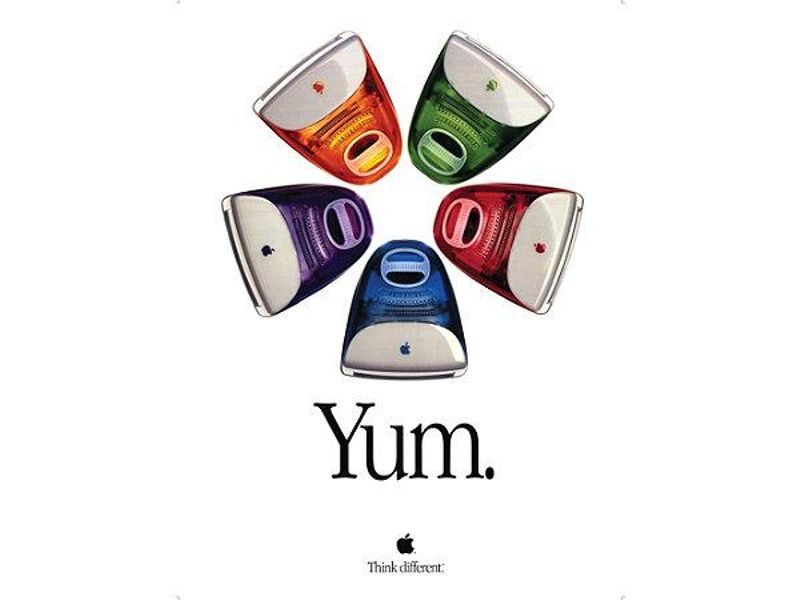
The colors of the translucent cases of the iMac (blueberry, grape, lime, strawberry, and tangerine) were often described as “flavors.” Steve Jobs commented, “We knew we had to name them after things you eat, because you just want to walk up and lick them.” (1997)
By Cara Dodge, Program Coordinator (former), Exponential Center | Published November 16, 2016
On November 15, Apple announced the release of Designed by Apple in California, a coffee table book chronicling 20 years of Apple products, available for purchase today at Apple.com and select Apple Store locations. If you’re not quite ready to drop the $300 for this latest Apple product, then enjoy a few of CHM’s favorite Apple ads from its collection.
9. Computing Luminaries Honored with Presidential Medal of Freedom
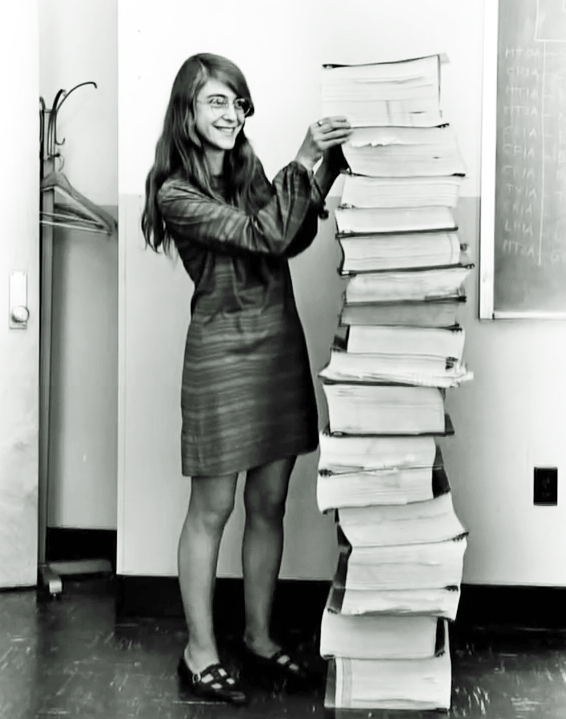
Margaret Hamilton with Apollo on-board flight software listings, ca. 1969.
By Chris Garcia, Curator | Published November 18, 2016
Established in 1963, the Presidential Medal of Freedom is one of the highest honors that can be bestowed by the President of the United States. Among other distinguished honorees, the 2016 Presidential Medal of Freedom was awarded to computer luminaries Rear Admiral Grace Hopper, Richard Garmin, Margaret Hamilton, and Bill and Melinda Gates. Learn more about the 2016 honorees in this blog by Chris Garcia.
10. Fairchild, Fairchildren, and the Family Tree of Silicon Valley
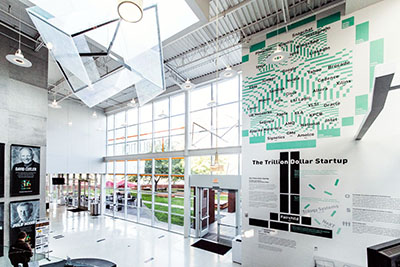
CHM's exhibit on Fairchild Semiconductor, the "Trillion Dollar Startup".
By David Laws, Semiconductor Curator | Published December 20, 2016
Sixty years after its founding in 1957, Fairchild Semiconductor Corporation is celebrated as “The First Trillion Dollar Startup.” Through an unprecedented series of innovations, the company spawned hundreds of ventures that established Silicon Valley as a world center of entrepreneurial activity and technological leadership. Although the firm’s market valuation never exceeded $2.5 billion, its surviving combined progeny have been estimated to be worth over $2 trillion. In conjunction with CHM’s lobby exhibit, Semiconductor Curator David Laws studies the history, impact, and lasting legacy of Fairchild in Silicon Valley.
Thanks to everyone, bloggers and readers, for making 2016 @CHM’s best year yet!